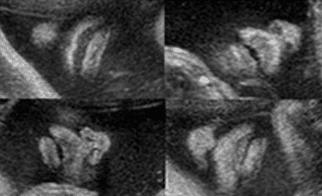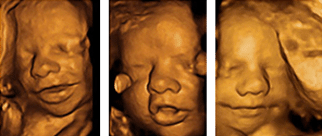During pregnancy, a minimum of three ultrasounds are performed. They help define the foetus age and the probable date of birth. They also help the sonographer studying the
foetus and its morphology in order to diagnose anomalies or malformations such as cleft lip.
During those different ultrasounds, the practitioner measures the different parts of the foetus’ body. This protocol, used by all sonographers, allows them to diagnose most malformations. However, the ultrasounds are not infallibles. Indeed, depending on the child position, some anomalies may not be visible. It usually happens at the facial level where the baby can be hiding his face with his hands, making it impossible to see if he has cleft lip.
The ultrasound allows to see cleft lip and measure it. If a cleft lip is observed, a surgery might be considered after the baby is born. It is important to remember that the width measured during the ultrasound is not predictive of the post operative results.
The diagnosis of cleft palate is more difficult. There may be indirect signs, such as the tongue position. the cleft palate is often evoked, but there may be diagnosis errors.
The different ultrasounds



Comments